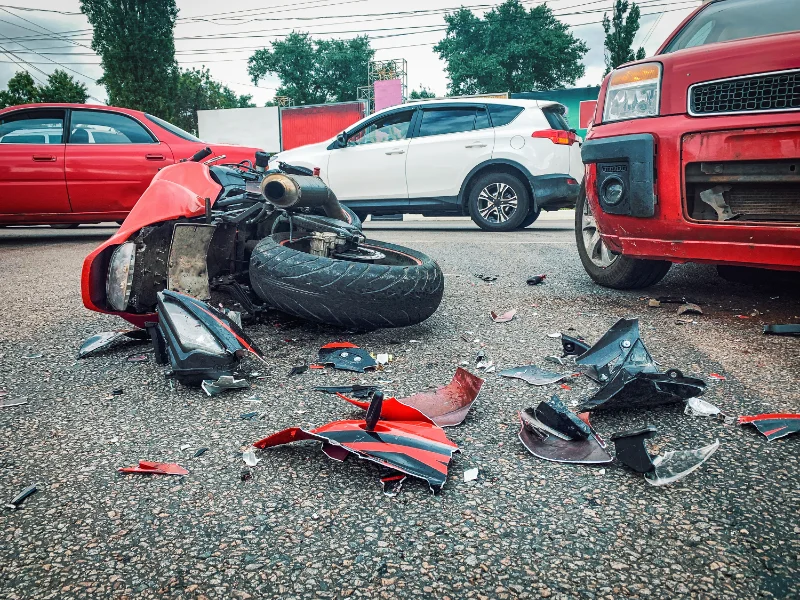Any kind of road accident can impact your life in the blink of an eye. However, if a motorcycle is involved, consider this: the odds of being injured as an operator or passenger of a motorcycle are much higher than the odds for someone inside an enclosed vehicle that crashes into you. In fact, according to the National Highway Traffic Safety Administration (NHTSA), motorcycle riders are 28 times more likely to lose their lives in a collision compared with other motorists on the road. They are also four times more likely to sustain an injury. Why, exactly, is this the case?
A motorcycle usually weighs somewhere between 300 and 500 pounds. Other vehicles sharing the road, on the other hand, might weigh anywhere from a ton to even 40 tons for a fully loaded 18-wheeler. As a motorcycle offers no exterior protection for the exposed operator, those other vehicles can inflict massive damage.
Hurt in a Motorcycle Wreck?
Get in Touch with usWhat To Do If You’re in a Motorcycle Accident
Your first concern if you’re involved in a motorcycle accident is your own safety and well-being. You may think you’re okay and that medical care can wait—or even be avoided altogether—but when you’re in an accident, an adrenaline rush can mask what’s really going on. You need to seek a medical evaluation as soon as possible.
If you or anyone is injured, or if property damage totals $2,000 or more, you also need to report the accident to the police. If the police come to investigate, you can then request a copy of their report once they file it, which can prove useful for any insurance claim or legal action you take.
If you’re physically capable, use your phone to take pictures or videos of what happened, including any property damage or visible injuries, along with any traffic signs that may have been ignored by the other driver. If there are witnesses, get their statements and contact information, which also can be quite useful in pursuing your claim.
The final and perhaps most important step is to seek the legal counsel of a motorcycle accident attorney. A skilled lawyer can handle the claim or lawsuit on your behalf while you recover and heal.
Determining Fault in Alaska
And Filing a Claim
Alaska is a “fault” state when it comes to insurance. This means that when you’re involved in an accident caused by another vehicle operator, you can make a claim directly with the other driver’s insurance. You can also make a claim with your own insurance company, which will then see a subrogation claim against the other driver’s insurance. Of course, another option is to file a personal injury lawsuit.
Fault is a key element of any kind of motorcycle accident. Fault is assigned based on whose actions, or inactions, caused the collision. This generally falls under the category of negligence. When you get a driver’s license, that is considered a privilege, and with that privilege comes what is called a “duty of care.” In other words, it’s your obligation to do everything you can not to harm others when you’re operating your vehicle. A claim or lawsuit rests on showing the other driver was negligent by doing or failing to do something that breached their duty of care and caused others to incur property damage or injuries.
Keep in mind that Alaska is a pure comparative negligence state. This means that both parties in a collision can be assigned a portion of the fault. Say one vehicle is rear-ended but the brake lights malfunctioned. The driver of the rear-ended vehicle might be deemed 30 percent (or more or less) at fault. When it comes time for the claim to be settled, or the court to award damages, that 30 percent will be deducted. If the claim or lawsuit is for $50,000, the plaintiff would thus get only $35,000—$50,000 minus 30 percent.

